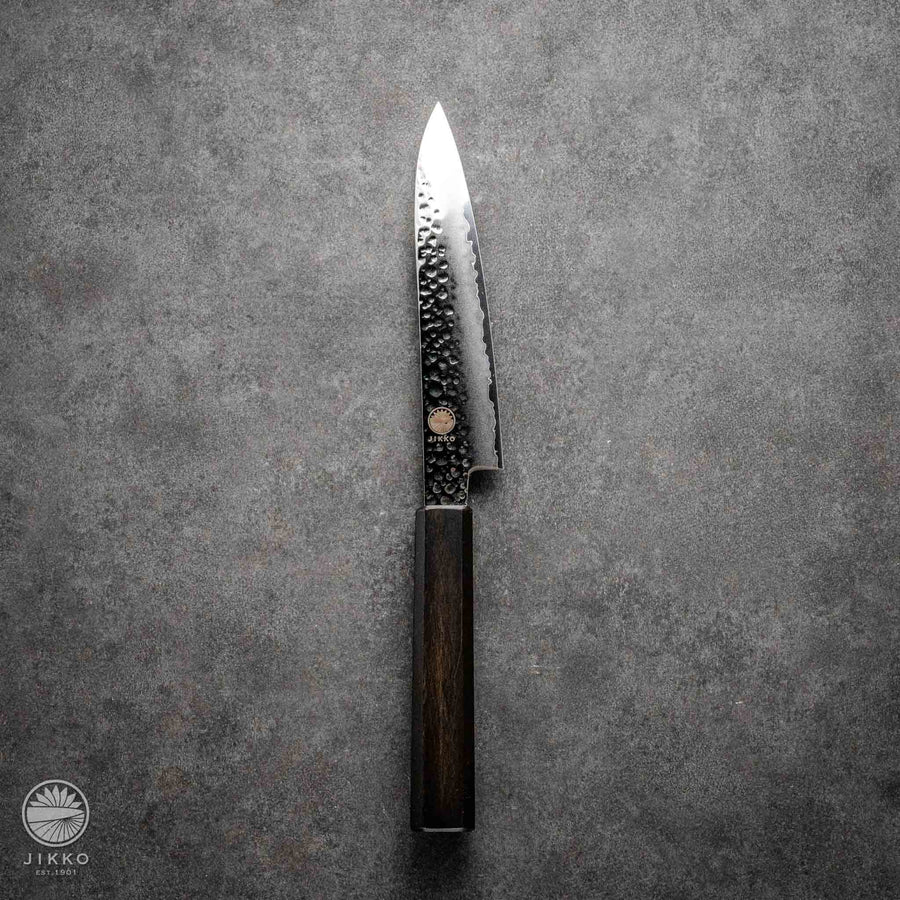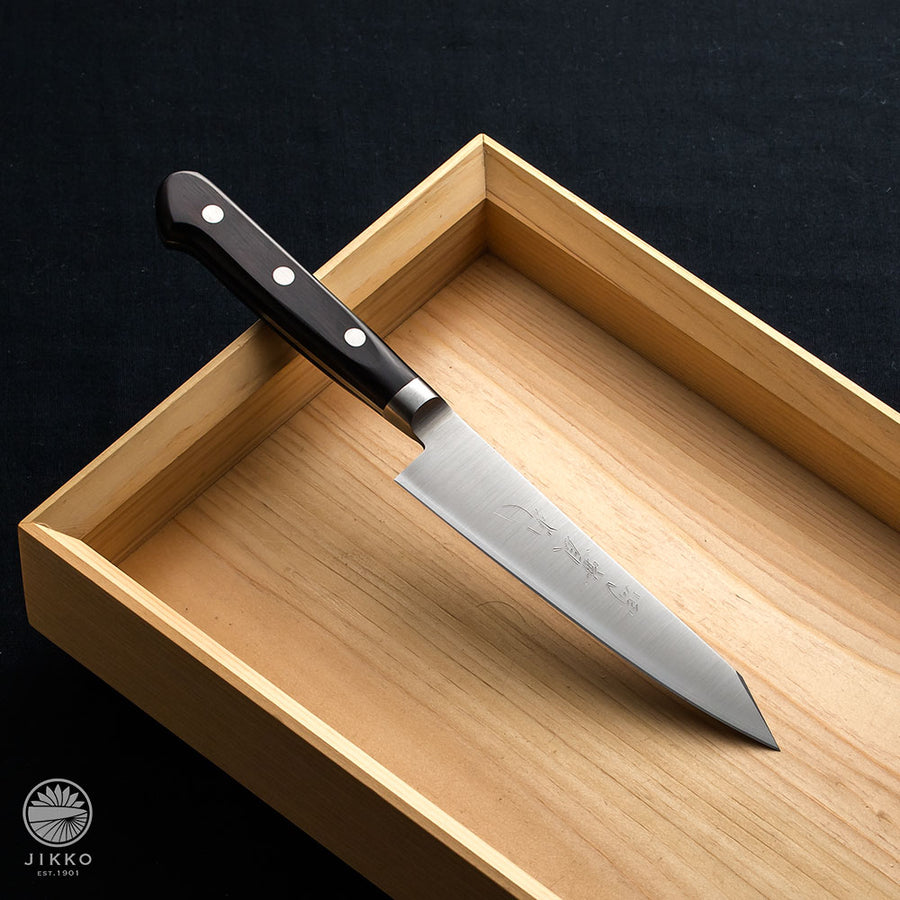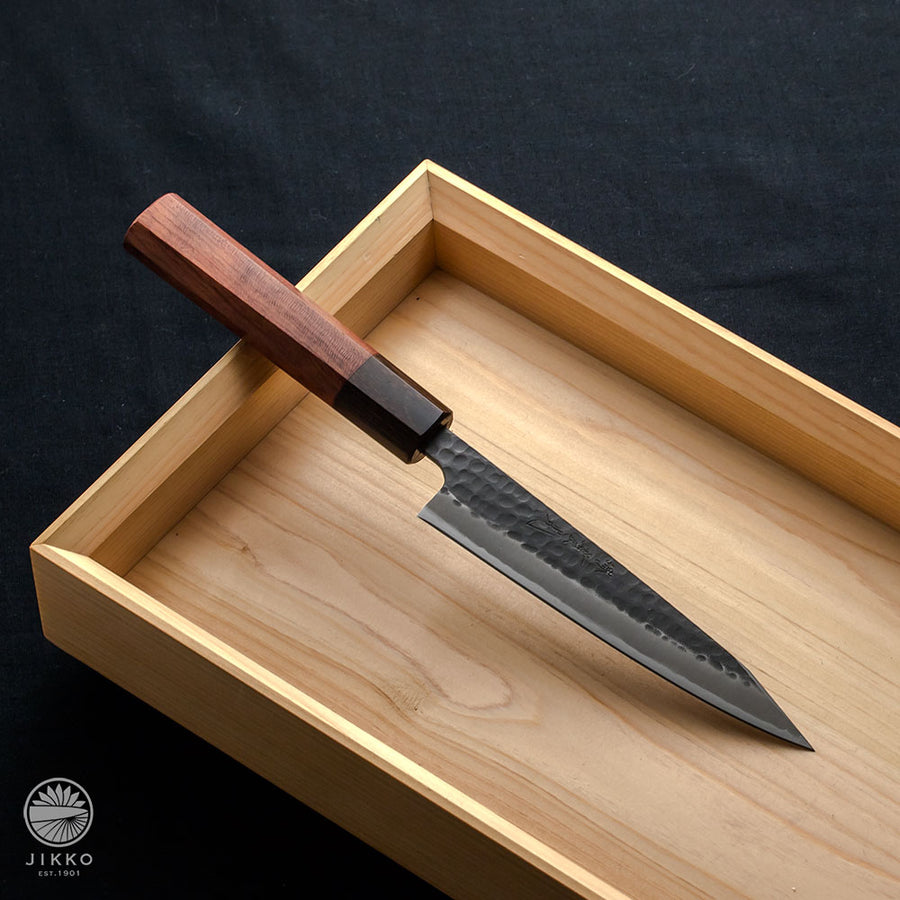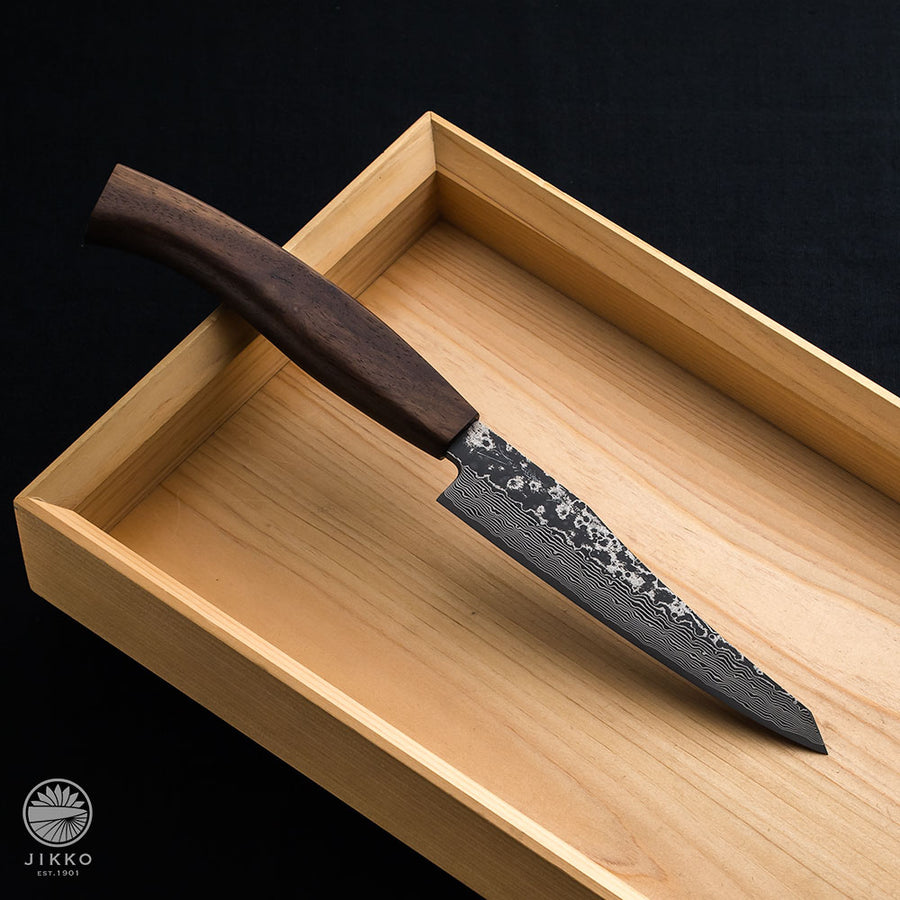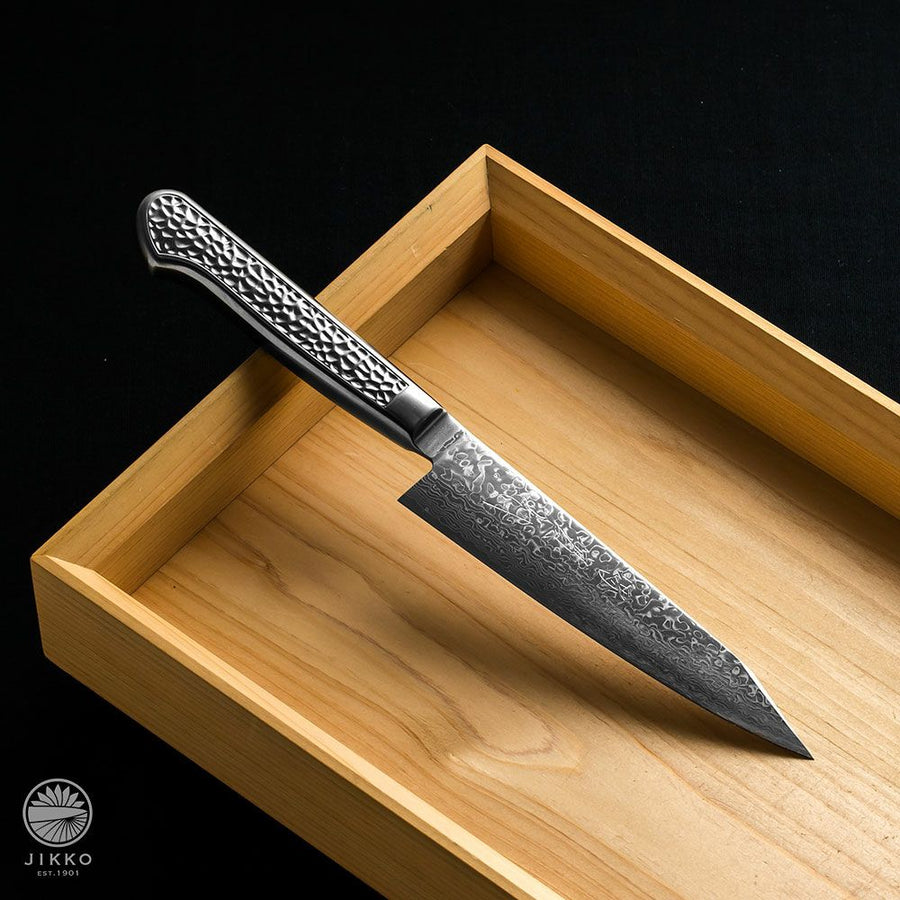Petty (Utility Knife)
19 products
19 products

This list categorizes different types of steel used in kitchen knives. The steels at the top of each list offer the best sharpness and edge retention.
Q: What is a Petty knife?
A: The Petty knife is a small, versatile knife with a blade length of 90mm to 150mm, ideal for peeling fruits, cutting vegetables, and precision tasks.
Q: What are the primary uses of a Petty knife?
A: Petty knives are perfect for peeling fruits, cutting small vegetables, making decorative cuts, and other delicate kitchen tasks.
Q: How does a Petty knife differ from a Santoku knife?
A: Petty knives are small and designed for precision tasks, whereas Santoku knives are larger and suitable for chopping, slicing, and dicing various ingredients.
Q: How does a Petty knife differ from a paring knife?
A: A Petty knife is more versatile than a paring knife, featuring a longer blade that allows for slicing, peeling, and finer cuts beyond fruit preparation.
Q: What is the ideal size for a Petty knife?
A: The most common sizes range from 90mm to 150mm. Choose based on your hand size and the tasks you intend to perform.
Q: What is the best material for a Petty knife?
A: Stainless steel is easy to maintain and rust-resistant, while carbon steel offers superior sharpness but requires regular upkeep.
Q: What types of handles are available for Petty knives?
A: Petty knives come with wooden handles for a natural grip, resin handles for durability, and stainless steel handles for hygiene.
Q: What is the best Petty knife for beginners?
A: A stainless steel Petty knife with a 120mm blade is ideal for beginners due to its easy maintenance and versatility.
Q: How should I use a Petty knife correctly?
A: Due to its small and lightweight design, a Petty knife is ideal for peeling, slicing small fruits and vegetables, and precision cuts.
Q: How should I care for my Petty knife?
A: Wash and dry immediately after use. Even stainless steel knives can develop rust if left wet for long periods.
Q: How do I sharpen a Petty knife?
A: Regular sharpening with a whetstone will help maintain the knife’s precision. The sharpening technique varies based on blade material.
Q: How can I prevent chipping on my Petty knife?
A: Avoid using it on hard ingredients, always use a proper cutting board, and store the knife safely after use.
Q: Can I use other knives instead of a Petty knife?
A: A paring knife or a small Santoku knife can serve as substitutes, but a Petty knife is better suited for precision tasks.
Q: What knife pairs well with a Petty knife?
A: A larger knife like a Gyuto or Santoku complements a Petty knife well, covering both large and small cutting tasks.



